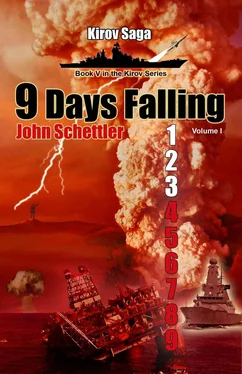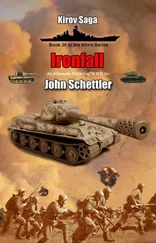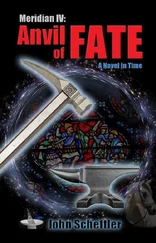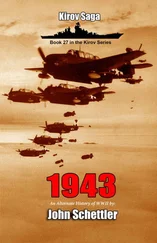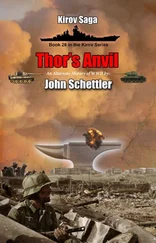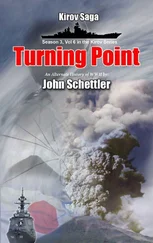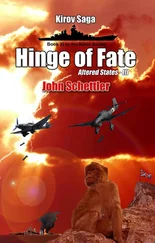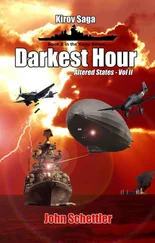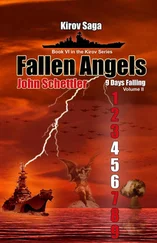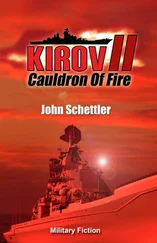You never get them all, he thought. Not even close. Some of the damn missiles always get through. They got through in Tel Aviv and Jerusalem when Israel and Iran traded blows in a brief, bloody exchange in 2014, and they’re going to get through here. They have more missiles and planes than we have SAMs! It was a sobering thought as the voice of his buddy Alex Wu, or ‘Alley Ho’ as he called him, came over his headset.
“You up there for the show, Pete?”
“Seeing more than I wished,” Tang called back. “They hit the fuel depot!”
“Going to be thirsty this afternoon then, Tang. So don’t pull any high G barrel rolls up here.”
“Not unless I have a J-20 on my ass,” Tang called back. “See you upstairs, Alley Ho.” He wondered if he would have a functioning base to return to in the hours ahead. His Falcon was not known for its endurance, though he knew tankers would be up in the next hour in the seas east of the island—if they could make it off the airfields in one piece.
Air bases on Taiwan took the brunt of the missile barrages, a deliberate and methodical interdiction intended to prepare the way for things Peter Tang and his mates would soon be contending with in the skies over the island. There were a hundred and fifty F-16s and another 56 Mirage 2000 fighters, most well overdue for the scrap yards by 2021. Taiwan had hoped to buy better F-16Ds from the US, but a skittish congress and budget problems never saw the planned purchase go through.
So the old Falcons would form the bulk of the air defense, supported by 126 of the indigenous F-CK-1A/B fighter interceptors, dubbed “the little fuckers” by US pilots that had trained with them over the years due to the obvious missing letter in their designation. They were capable interceptors, with over 70 upgraded to the new Hsiung Ying C/D (Brave Hawk) model, but would be overmatched by their adversaries on the mainland in due course. The alert ready squadrons climbed up into the angry sky to take up their defensive patrol stations while their brothers behind them would have to deal with the cratered runways when the DF-11s began to hit home.
It soon became clear that this initial barrage was largely aimed at military installations, ports and airfields, and that China’s primary strategy was to try and defeat Taiwan’s defenses before the United States could intervene. An hour after the first massive barrage of 300 missiles, another 300 were being deployed and ready to strike in three waves of 100 each.
Unwilling to stand simply on defense, Taiwan immediately ordered up some bad weather of its own—the Hsiung Feng cruise missile, or Brave Wind with a 600 kilometer range, and the more dangerous Yunfeng with an extended range of up to 2000 kilometers. While only fifty of these longer range missiles had been produced, they would be able to strike a range of targets in mainland China, including Air Force Regional headquarters, Naval bases, fighter and bomber divisions, even as far away as Beijing and Shanghai. Taiwan could deliver one good shock to her adversary, because even though the Chinese had a very robust SAM umbrella themselves, Tang had been correct—you never get them all. It would be enough to save face and rattle the nerves of the people in heavily populated cities when the missiles came in, but not enough to seriously degrade China’s military capability. The Brave Wind was just that, an audacious reprisal intended to inflict short term pain, but it was one the PLA would answer in spades. The East Wind was a storm of serious hurt, and it carried more than ballistic missiles.
The DF-11’s were just the opening round. By the time the second series of 300 missiles had concluded their barrages, there had been over 200 that hit home on or very near their intended targets. The port at the off shore archipelago of Makung was hit with quays blasted, fuel and ammunition storage bungers in flames and one of the three frigates that had been berthed there was struck at her berthing. The Chi Yang, a Knox class frigate, was the first ship of the Taiwan Navy to feel the Dragon’s bite, sinking quickly in a raging fire. Two other frigates berthed there, the Fong Yang and Fen Yang were quickly hauling anchors and racing out to sea even as another spectacular near miss saw a DF-11 send a massive geyser of water skyward in the harbor. Airfields at Hualien, Tainan, Chiayi and Taitung had all been hit, but the cities near them were assiduously spared.
It was then that Lt. Peter Tang saw the threat vector data feed from the E-2C AWACS now coordinating long range surveillance. Enemy fighters were inbound at high altitude, and Tang called to his squadron mates to rally them for the battle ahead. The pilots were brave and well trained, but the odds they would soon be facing were very steep. The Chinese had learned a hard lesson when they scrambled older J-10 and J-11 fighters in their recent duel with Japan over the Diaoyutai Islands.
This time they were sending their best, the one plane Tang was really worried about, the formidable J-20. These were the planes Lt. Matt Eden had warned about when he said the ‘Bats’ were redeploying to coastal airfields days ago, and the same planes defense expert Reed had called ‘Vampires’ when he tried to explain them to the White House Chief of Staff. They were China’s A game, their premier fifth generation stealth fighter, and they trumped any older legacy fighter the Air Force of Taiwan could put in front of them.
It had taken the Chinese some time to get the planes fully wired and ramped up for mass production. By 2021 the plane was a fully integrated and well tested strike fighter and China had built 120 for front line deployment. They were being flown by an elite if limited corps of highly skilled pilots, the very best graduates from the flight schools and military training programs.
The J-20s formed up in three heavy strike squadrons of twenty planes each, half the available inventory. They would be accompanied by some other very capable friends, for China had also produced several squadrons of J-16 ‘Silent Flankers’ in response to similar programs mounted by the US with their ‘Silent Eagle.’ Only thirty-two in number, the J-16 was really a modified J-11B that incorporated rudimentary stealth features. It took a very good plane and made it better, and thirty were aloft in the vanguard, leading in the J-20s. To either side of this central formation of ninety planes were two groups composed of J-10 and J-11 fighters, thirty each. The first major air strike against the beleaguered island would therefore come from 150 planes.
The attack was aimed at the air defense gap between Hsinchu and Taichung, preceded by a wave of truck launched CJ-10 Long Sword cruise missiles aimed at two key targets in the breakthrough zone. One was the coastal radar site at Houlong, and the other was the single HAWK battery near Miaoli City. If it was taken down the overlapping circles of SAM coverage would lapse in this one area, and leave a gap in the defense. While those two cities deployed robust SAM defenses, the gap between them was more sparsely defended. Their aim was to break through this HAWK battery and streak in high over the central highlands and then sweep north to the big naval base at Suao. Others would come in at Taipei from the south, though a few groups had some very special missions.
The J-20s were targeted at the big dam facilities that held in the Shimen Reservoir supplying water to more than three million people in northern Taiwan. Other dams controlling water flowing from the bigger FeiTs’ui / Feicui Reservoir would also be targeted, and within thirty minutes of their destruction an uncontrolled cascade of water would come surging down the two major rivers flowing from the highlands down into the capitol of TaiPei.
Читать дальше
